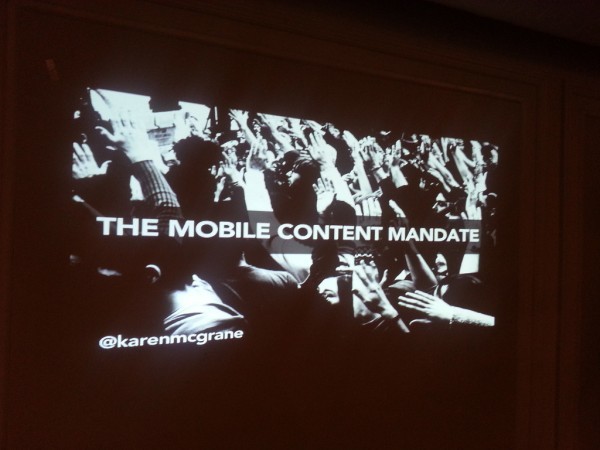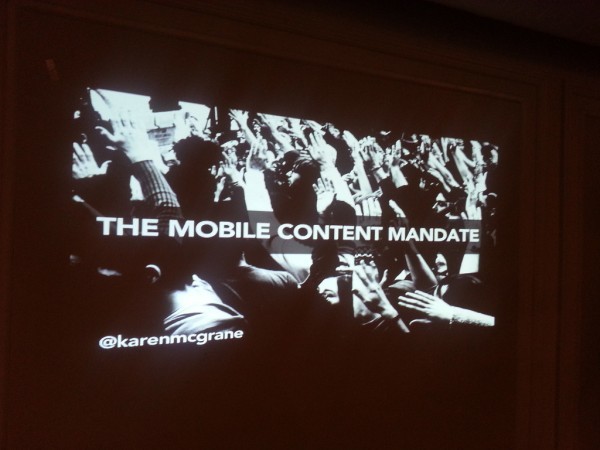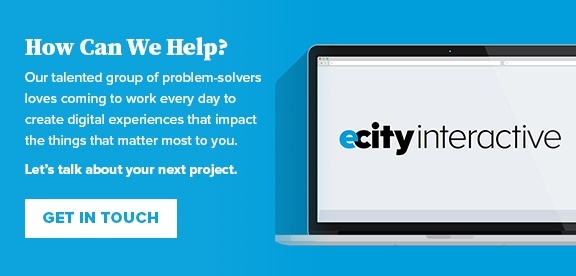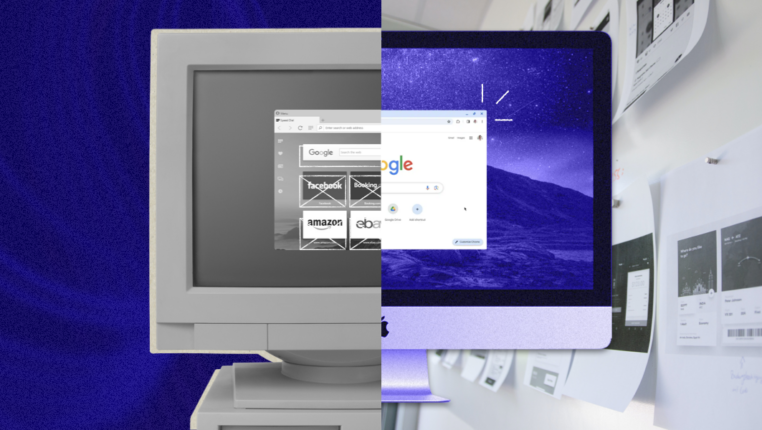Recently, PhillyCHI & Content Strategy Philly invited Karen McGrane to present “The Mobile Content Mandate.” Karen is an industry-leading UX consultant and the author of Content Strategy for Mobile.
Her key message: You don’t get to decide which platform or device customers use to access your content. They do.
To drive home the point that content needs to be delivered on multiple platforms, especially via mobile web, Karen first presented some key moments in recent history related to disruptive innovation.
Wikipedia defines a disruptive innovation as “an innovation that helps create a new market and value network, and eventually goes on to disrupt an existing market and value network (over a few years or decades), displacing an earlier technology.”
This disruption to existing markets has happened time and again. One example that illustrates this point the best is cameras: larger, expensive, high-quality cameras were replaced by pocket-sized cameras as “the camera that’s always with you,” and then later by phones with cameras.
How does disruptive innovation relate to delivering content on mobile devices?
You have probably heard someone in your organization (or even one of your clients) say something like, “No one uses that on mobile. Why would they need to? They can use their desktop computer.”
Sounds reasonable. If you have multiple computer options with internet access, why not?
If you compare using a mobile device vs. a desktop computer to using a pocket size camera vs. a larger higher quality camera, there is a similar reason behind using one over the other. It’s with you.
Here is a Pew Research Center study Karen referenced saying “A majority of adult cell owners (55%) now go online using their phones.”
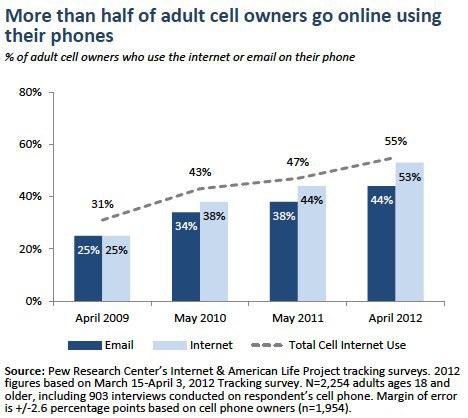
Of these 55% of mobile web users, “When asked what device they normally use to access the internet, 31% of cell phone internet users say that they mostly go online using their cell phone.”
This 31% of cell phone internet users was further broken down to show some demographic information about people who mostly go online using their cell phone:
- 45% of 18-29 year olds
- 51% of Black, non-Hispanic
- 42% of Hispanic
- 43% of people with a household income less than $30,000
So what do these statistics mean? Karen points out the need for equal opportunity access to employment applications, healthcare and educational resources, and financial management. If your content is not delivered equally across all platforms, then access to that content is restricted.
A great example of an organization that thought about this problem and did something about it is the American Cancer Society. When looking at the statistics for populations that mostly go online using a mobile device, they realized that populations underserved by traditional computers were also likely to have limited access to healthcare resources and thus be less likely to get screened for cancer – so they made the strategic decision to have all content on their desktop site be accessible on the mobile site.
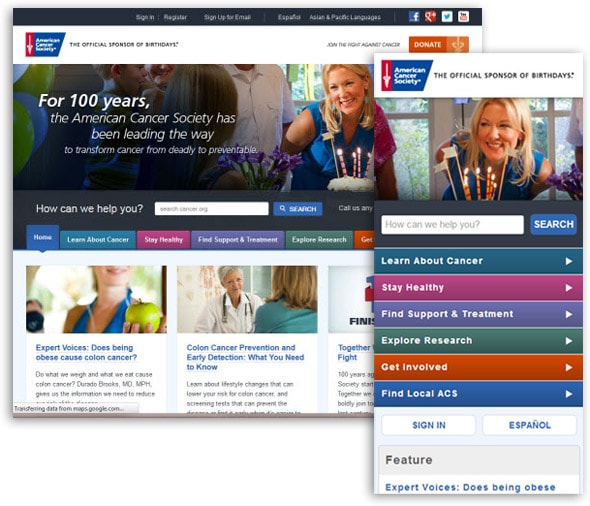
Which all leads to one of Karen McGrane’s key points:
“It doesn’t matter whether you’re reading it on the desktop or the mobile device. It’s not that it was written for mobile, it’s just that it was good content. Even if you’re not sure what you could be doing right now to get your content on mobile one of the things you can be doing that would be making a real difference for your organization and for your users would be going in and editing your content.”
Some final takeaways from this presentation:
- Know Your Workflow. In order to make a plan to deliver content on multiple platforms, you need to know your workflow. As Karen stresses, “It’s not a content strategy if you can’t maintain it.” Think about who will create your content, and more importantly, who will maintain it long term.
- Write Better. With a goal to write better, you don’t just think about writing for mobile vs. writing for desktop, but “writing better, period”. Some users will use a mobile device instead of a desktop browser because a site seems easier to use. It’s not just because there is less content, but that more thought was put in to how content was presented.

